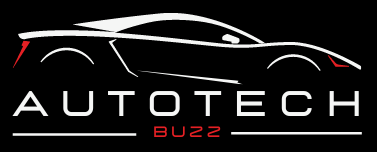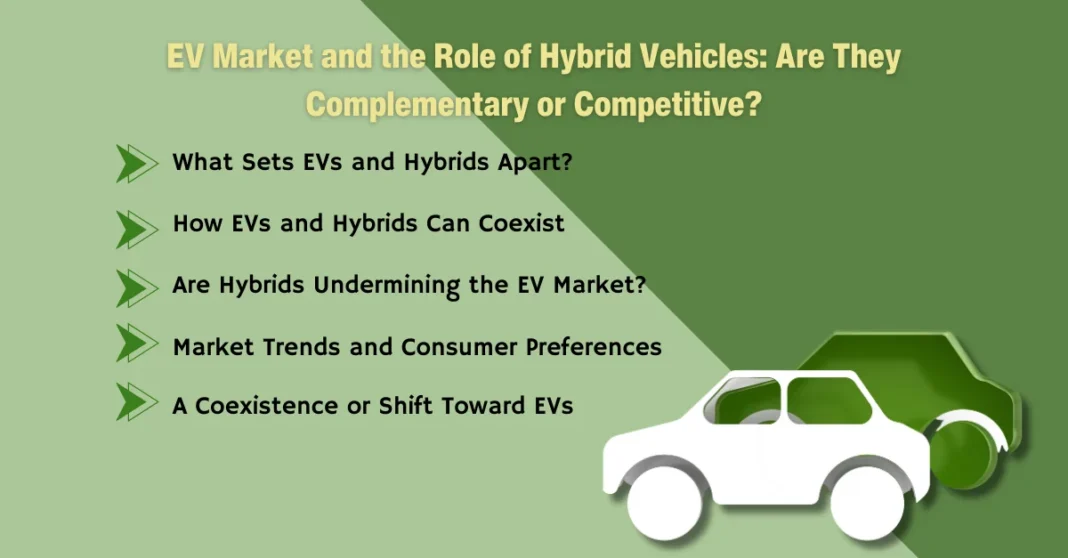The debate over the roles of electric vehicles (EVs) and hybrid vehicles (HEVs) in the global push towards sustainable transportation has intensified in recent years. While both technologies are designed to reduce carbon emissions and fuel consumption, they differ significantly in their powertrains, operational efficiencies, and market positioning.
1. Understanding the Basics: What Sets EVs and Hybrids Apart?
- Electric Vehicles (EVs): EVs run purely on electricity, stored in rechargeable battery packs, and produce zero tailpipe emissions. They require a robust charging infrastructure and are considered the most environmentally friendly option in terms of direct emissions.
- Hybrid Vehicles (HEVs): Hybrid vehicles combine an internal combustion engine (ICE) with an electric motor. The electric motor assists the gasoline engine, improving fuel efficiency and reducing emissions compared to traditional vehicles. However, hybrids still rely on gasoline for longer ranges, with the electric motor acting as a supplementary power source.
2. Complementary Technologies: How EVs and Hybrids Can Coexist
Transition to Full Electric Vehicles: Hybrid vehicles often serve as a stepping stone for consumers transitioning from gasoline-powered cars to fully electric vehicles. For drivers hesitant about range anxiety or the lack of charging infrastructure, hybrids offer a lower-risk entry into electrified mobility.
Varied Consumer Needs: Hybrids appeal to consumers who require longer ranges than most EVs can currently provide, particularly in regions with limited charging infrastructure. Meanwhile, EVs cater to individuals who have access to a reliable charging network and prefer a fully electric driving experience.
Dual Adoption Strategy: Automakers can benefit from offering both EVs and hybrids in their portfolios, catering to a broader range of consumers. By providing a diverse selection, manufacturers can address various driving needs and preferences, which could help boost the overall adoption of electric mobility.
3. Competitive Dynamics: Are Hybrids Undermining the EV Market?
Slower EV Adoption Due to Hybrid Alternatives: Some critics argue that the availability of hybrid vehicles could slow the widespread adoption of full electric vehicles. For example, if a hybrid can offer comparable fuel savings and lower emissions, some consumers may opt for a hybrid instead of an EV, particularly if they have concerns about charging infrastructure or long-distance travel.
EVs as the Ultimate Goal in Sustainability: For governments and environmental groups pushing for a complete shift to zero-emission vehicles, hybrids are sometimes seen as a compromise. While they offer lower emissions than traditional ICE vehicles, they still contribute to air pollution through the use of gasoline, making them less ideal for long-term sustainability goals.
Technological Competition: As battery technology improves and charging infrastructure expands, fully electric vehicles will likely continue to gain market share over hybrids. EVs offer a more streamlined and future-proof solution, while hybrid vehicles could eventually be phased out in favor of more efficient electric alternatives.
4. Market Trends and Consumer Preferences
EV Adoption Rates on the Rise: Despite the continued popularity of hybrid vehicles, the global shift toward fully electric vehicles is gaining momentum. Increased governmental support, better range capabilities, and falling battery prices are all helping to drive EV adoption.
Hybrid Market Growth: On the other hand, hybrids still dominate certain markets, particularly where the infrastructure for EVs is still underdeveloped. In regions like the U.S. and Japan, hybrids remain a significant part of the automotive landscape due to their fuel efficiency and reduced emissions relative to conventional gasoline cars.
5. The Future of EVs and Hybrids: A Coexistence or Shift Toward EVs?
Advancements in EV Technology: As technology continues to evolve, EVs will likely become more affordable, with longer driving ranges and faster charging times, making them more appealing to a broader audience. Hybrid vehicles may gradually phase out as electric vehicles become the go-to solution for sustainable transportation.
Regulatory Pressures: Governments worldwide are increasingly mandating stricter emissions regulations and offering incentives for fully electric vehicles. This regulatory push could accelerate the transition away from hybrids toward fully electric vehicles, with many manufacturers already announcing timelines to phase out ICE vehicles entirely in the coming decades.
Hybrids as a Bridge: In markets where full electrification is still a few years away, hybrid vehicles may serve as a transitional solution. They could remain relevant as part of a broader strategy to reduce carbon emissions during the interim period while the infrastructure for EVs catches up.
Conclusion: Complementary or Competitive?
Ultimately, the relationship between EVs and hybrids is not entirely black and white. They can be seen as complementary technologies that address different consumer needs and geographical challenges, especially in the short to medium term. Hybrids provide a solution for those not yet ready to fully commit to an electric vehicle, while EVs represent the future of sustainable mobility. However, with advancements in battery technology, increased charging infrastructure, and regulatory pressures, hybrids could eventually become a stepping stone toward a fully electric future.
For the time being, both EVs and hybrids will likely coexist in the market, but the balance could shift as electric vehicle adoption continues to rise, and hybrid vehicles gradually make their way out of the spotlight. As such, their relationship will continue to evolve based on consumer needs, technological progress, and policy-driven goals.
#EVMarket #ElectricVehicles #HybridVehicles #EVvsHybrid #EVAdoption #ElectricMobility #EVTrends

